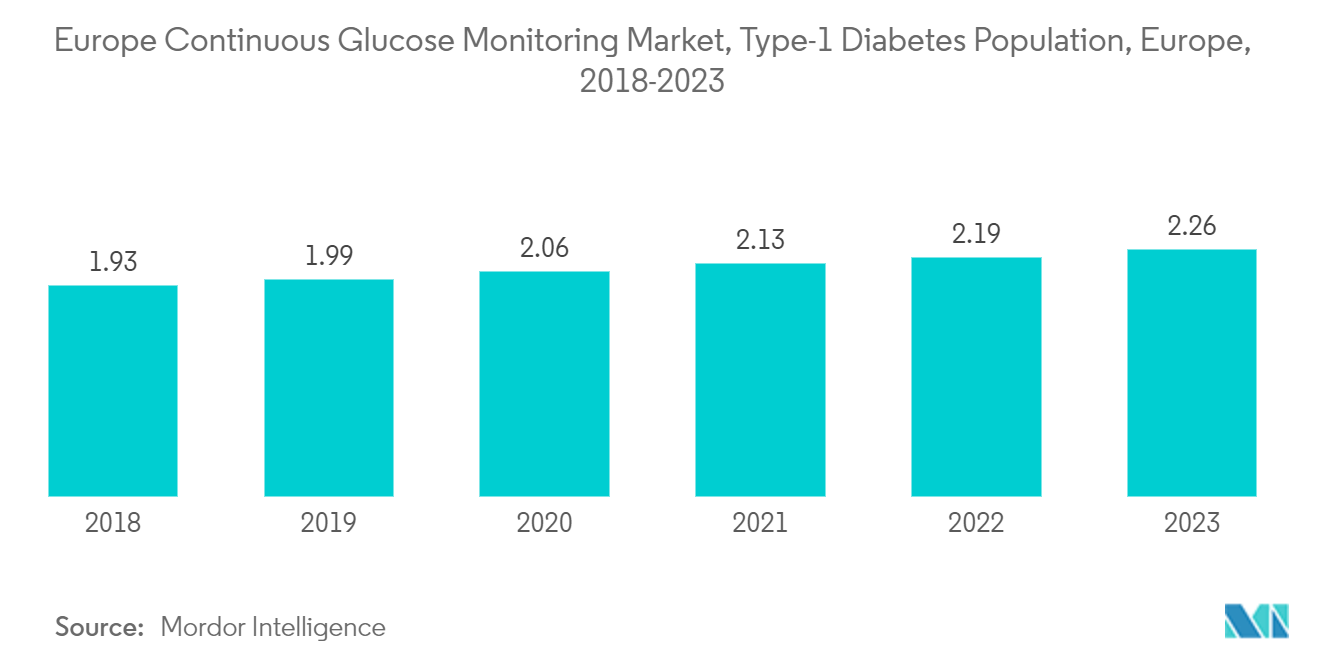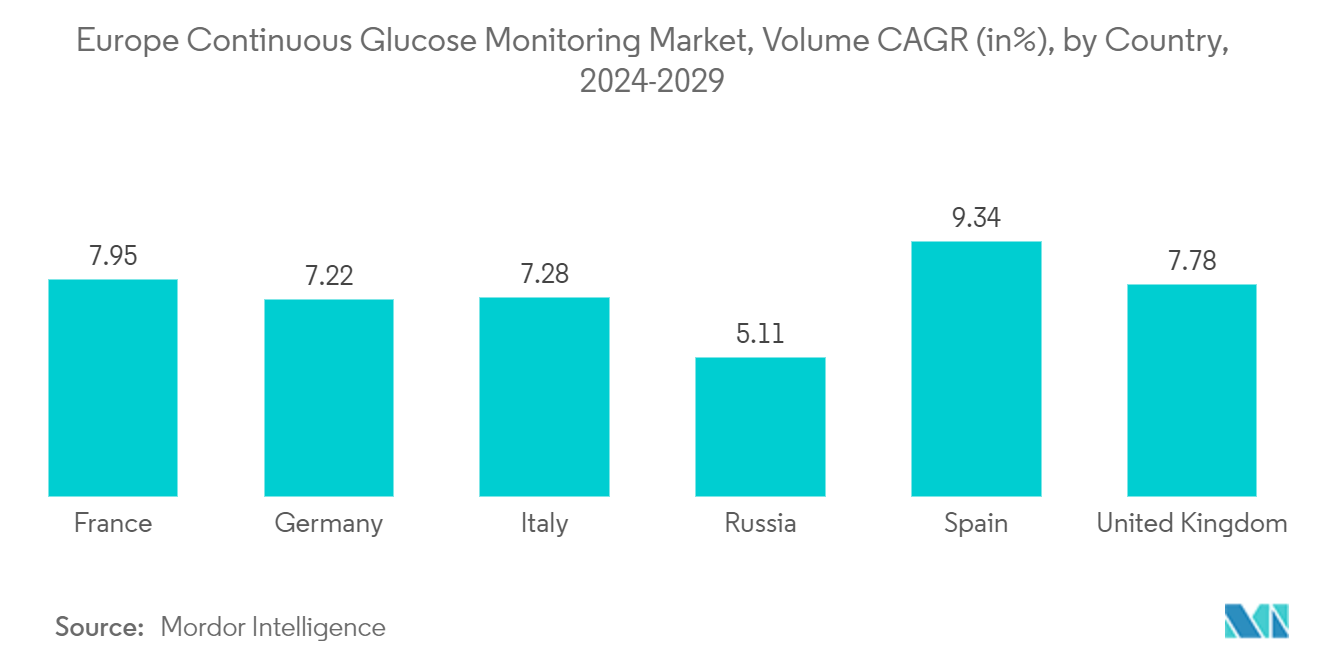Market Trends of Europe Continuous Glucose Monitoring Industry
Continuous Glucose Monitoring Devices Prove to be an Instrumental Tool in maintaining Glycemic Balance
CGMs are used to deliver a more descriptive picture of blood glucose patterns and trends than can be achieved by traditional routine checking of glucose levels at set intervals. The current CGM devices can either retrospectively display the trends in the levels of blood glucose by downloading the data or give a real-time picture of glucose levels through receiver displays.
Most real-time CGMs can offer an alert to patients, parents, or caregivers during actual or pending glycemic visits to facilitate timely management of blood glucose. This factor, along with the fact that CGM devices are becoming cheaper with the advent of new technologies like cell phone integration, means the CGM market is expected to witness steady growth during the forecast period.
European countries are suffering from the burden of high diabetes expenditures. According to the IDF, the overall diabetes expenditure in Europe among the population aged 20-79 years was USD 156 billion, and it is expected to increase to USD 174 billion by 2040. According to other statistics from the IDF, every year 21,600 children are added to the type-1 diabetic population pool.
These figures indicate that approximately 9% of the total healthcare expenditure is spent on diabetes in Europe. For patients relying on insulin pumps or multiple daily injections (MDI) therapy, the CGMs prove to be an effective tool that helps in the improvement of glycemic balance without aggregating the danger of severe hypoglycemia.

Germany is Expected to Dominate the Europe Continuous Glucose Monitoring Devices Market.
In the European continuous glucose monitoring market, Germany accounted for approximately 21% of the market value in the current year. Germany has one of the highest diabetes populations in the European region, with more than 9 million diabetes cases in the present year. By forecasting years, the continuous glucose monitoring market in Europe is expected to be valued at more than USD 2.8 billion.
The German Center for Diabetes Research (DZD) conducts extensive scientific research to develop effective prevention and treatment measures to halt the emergence or progression of diabetes. The CGM devices must be used alongside insulin pumps. It is observed that there may be a potential increase in the diabetes population, which can be directly related to a higher number of diabetic patients using insulin pumps for diabetes management. Thus, the number of units of CGM devices sold is also expected to rise.
Comparing a routine examination of blood glucose levels at predetermined intervals to the current CGM devices reveals a detailed picture of blood glucose patterns and trends. Also, modern continuous glucose monitoring devices can either provide a real-time image of glucose levels through receiver displays or retrospectively exhibit trends in blood glucose levels by downloading the data. Patients with type-1 diabetes use CGM much less frequently than those with type-2 diabetes. Yet, type-1 diabetes patients spend almost twice as much on these devices as type-2 diabetic patients do. The Abbott Freestyle Libre and the Dexcom G6 are the two most recent CGM devices, and they surmounted several technical challenges.
Throughout the coming years, it is anticipated that the prevalence of type-2 diabetes will rise significantly as a result of an aging population and an unhealthy lifestyle. The most important elements in preventing complications in German type-2 diabetes patients are high-quality care, which includes proper monitoring, control of risk factors, and active self-management. The development of novel medications to give diabetic patients more treatment options has been driven by the disease's increasing incidence, prevalence, and progressive nature.
Therefore, owing to the aforesaid factors, the growth of the studied market is anticipated in the European region.


